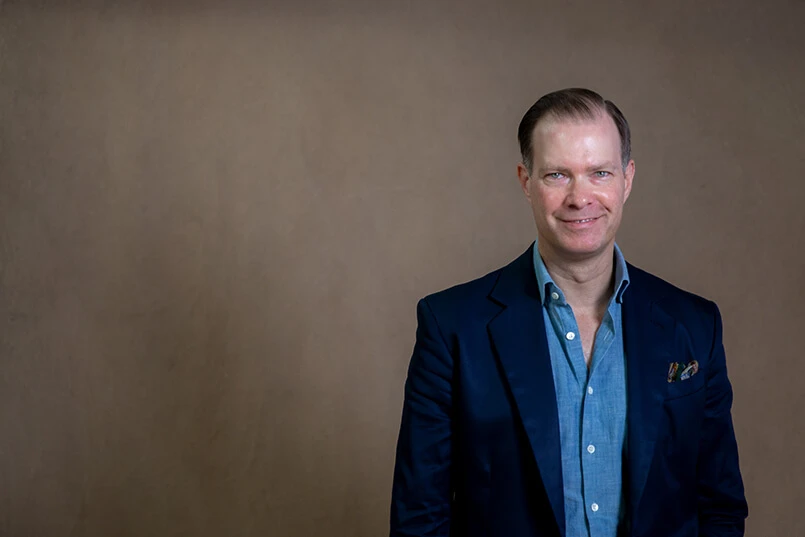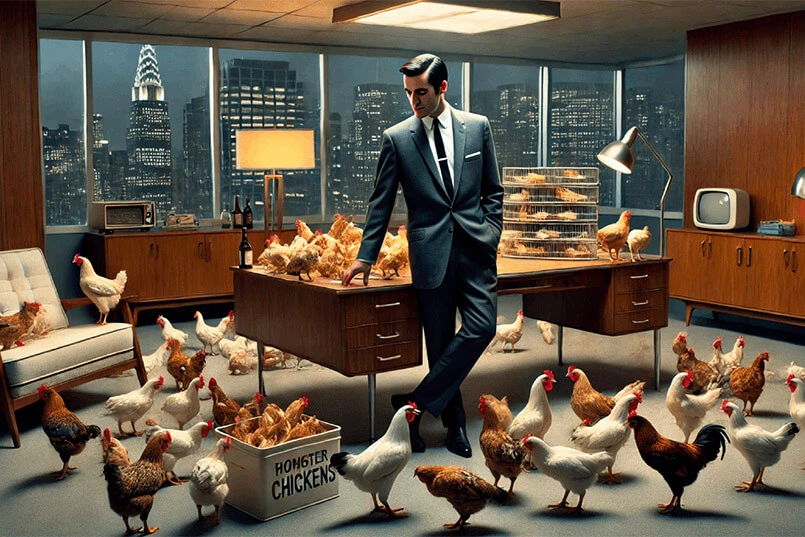In advertising, marketing and media there is a lot of discussion on the management and optimisation of the client / agency relationship. In fact any Google search of the term yields many millions of hits from the sublime to the often ridiculous. But it is clearly a hot and important topic. The marketing and advertising process is an iterative one, with input from a significant number of stakeholders within an organisation and outside suppliers.
Throughout my career a common phrase has always been “It is a people business” and therefore developing the right people relationships is important to achieving productive relationships. So the question is; “Is there an ideal client / agency relationship?”
The dictionary definition of a relationship is “a connection, association, or involvement, an emotional or other connection between people”, therefore is there an ideal version of this or are there actually a vast number of relationships that provide productive working outcomes?
The team at TrinityP3 has extensive experience both working in these relationships and working independently of these relationships in their role as Marketing Management Consultants. I asked them to identify some of the classic personality types which affect client / agency relationships that they have observed.
While the list is by no means exhaustive, it is reasonably comprehensive. We encourage you to add additional types in the comments below.
1. The Planet-Sized Brain Client
This senior client changes the brief on the spot (although not the timing or the deliverables) after weeks of agency work simply because ‘no-one sees it like they do’.
Instinctive and emotional, they usually come with an adoring team of yes-marketers and a fabled success or two somewhere in their careers (although even a stopped clock is right twice a day). Ask them to justify their thinking, write anything down or tie anything into research, insights or data and you’ll get extremely short shrift and a new set of barked orders.
2. The Incredible Disappearing Client
This mid-level client will go to ground as soon as any decision needs to be made, as soon as anything gets tough or – particularly – as a presentation to senior stakeholders looms.
Emails, texts, phone calls, messages – nothing gets through for days at a time, and so the agency team ends up having to make the calls. Don’t worry though – you’ll see them at the presentation, either smiling and claiming credit if everything goes well or shaking their heads and blaming the agency if it doesn’t.
3. Doctor No
This one is easy. Just say ‘no’. Keep saying it, whatever creative proposals or strategic thinking is put before you. Sometimes, if you think they are onto you, then you can give a qualified ‘yes’ to a brief – only to say ‘no’ later when they come back with the work.
Eventually, when someone asks you if the agency is actually any good, then you’ll have your answer all ready to go.
4. The Immersive Briefer
These mid-level clients usually don’t have enough to do. So rather than spending their available time making the creative brief as short, clear and useful as possible, they decide to use up all the agency’s time instead.
This usually means demanding direct access to all creative teams working on the business, taking them through a day of research debriefs and setting up some artificial, patronising, god-awful ‘briefing session’ to get the ‘creative juices flowing’ (that phrase always comes up somehow).
5. The Brand Cult Client
No-one understands the brand like these clients. No copywriter can quite capture the right tone of voice. No art director can ever-quite get the look right, even though the brand guidelines are so specific. These clients have to go over everything and change it to make it just so. Why can’t any agency get this, ever? The trouble is, no consumers get it either.
6. The Squirrel
The squirrel is a marketer who hides information away from everyone else, internally and from agencies, like they are storing nuts for a famine. They will dole out the nuts of information when they see fit as a way of maintaining a power position within the relationship.
They run the risk of holding information for too long, which can make it stale, at this point they will deny ever knowing about it in the first place.
7. The Savior
The marketer who holds budget back never letting the agencies know the true amount they have to work with. They see this as a game to make the agencies deliver ridiculous output on a minimal budget. They will release money when the agency has reached breaking point as a way of swooping in like a savior thus making them a true hero in the eyes of the agency.
8. The Creative Expert
The senior marketer and at times CEO who feel they are more creative than the experts they have engaged in the agency. Every piece of creative is scrutinised and criticised so it ends up morphing into what they want – usually because the agencies have lost the will to live. Unfortunately for the creative marketer/CEO, the issue usually stems from their brief, not the agencies output.
9. The Director
This is a senior marketer who employs agencies based on their skill and expertise, telling them so at time of engagement, then proceeds to manage the relationship by constantly directing them in what they need to do. According to the director, the world is their stage and everyone else is just a bit player.
10. The Player
The player thrives in both agency and client environments and spends more time working on their personal brand than the brand they are meant to be marketing. They are often too busy to attend key business meetings, but you will always find them at a networking function nursing a beverage and a soggy canapé.
11. The Ticket Pig
The ticket pigs exist in both agency and client environments and constantly have their snouts in the trough looking for freebies and tickets to exclusive events. They do this to elevate their player profile and to be seen.
Agency ticket pigs will buddy up with the client to ensure they are always their plus one, and the client ticket pigs will pump their agency contacts (especially media) for tickets for the best seats in the house.
12. Master / Servant
Stereotypically this is the traditional command and control model, often used to mask the fact that those in command have no idea of what they are doing. The marketing team act superior to the agency criticising their recommendations and providing direct orders on what is required with an expectation the agency will deliver it without question.
13. The Dominate / Submissive Team
The senior marketer dominates their team with liberal amounts of irrational criticism leaving them constantly second-guessing as to what to do next. They turn to the agency for help, placing the pressure on the agency to find as many solutions as possible to placate the bosses displeasure, only to blame the agency when the recommendations are rejected by the dominant marketing head.
14. The Master Manipulator
Plays agencies on the roster off against each other in order to try to achieve better performance but ends up building a culture of fear and mistrust. Uses the same manipulation internally, playing colleagues off against each other.
Usually found in larger organisations where they are able to polarise the teams into sycophants and those that just end up leaving. Meanwhile, the agencies are inclined to hang in there for the payday.
15. The Lovers
Often observed during the ‘honeymoon’ period just after the appointment of the new agency, the client and the agency are in love and overlook the shortcomings and faults of each other, content to share platitudes.
There is a deep seated belief that no matter the issue they can work it out, after all this is as close to a professional soul-mate as you are ever likely to find. NB: Rarely lasts more than 12 months.
16. The Partner
They describe the relationship as a partnership, demonstrating true mutual respect and developing a business building relationship. The marketers are keen to involve the agency in all forward planning, share budgets and plans as soon as possible and get them involved in NPD. Before major decisions are made the agency partners are consulted.
17. Agency Dependent Client
Superficially this may look like a Partner relationship, but it goes beyond that and really the client relies on the agency to advise or actually run their marketing department.
It puts enormous responsibility and undue pressure on the agency, as the client really cannot make any decisions on their own and relies heavily on the agency to do a lot of their marketing thinking. But of course, when it goes wrong it is the agency’s fault.
18. Too Nice Client
This is the client that is often heard complaining about their agency and their shortcomings and failures, but in front of the agency keeps quiet and says nothing as they do not want to offend or do not have the time to deal with the fallout of speaking their mind honestly.
Instead they leave the agency believing they are doing a great job right up to the time the agency is informed of a pitch or review of the business, but more likely projects will slowly drift away to another agency. After all, we do not want a confrontation.
19. The Yes Agency
This is where the agency wants to keep the business so desperately they do everything the client asks. They are yes men and women to the client, so the agency suffers terribly with creative departments just becoming an execution department to execute the client’s wishes.
While it may appear as a Master/Servant relationship it is not of the client’s doing. It’s more the agency too scared to speak up, say no and actually try and push the client to do better work that’s better for their business.
20. The Micro Manager
This is the client who insists on checking and changing every last detail, despite the professional recommendation of the agency. They rewrite every piece of copy or revise a TV buying spot-list by taking a red pen to it and choosing programming to his or her own liking.
They complain that if they want something done they have to do it themselves, while actually undermining the desire of anyone working with them to even try in the first place.
21. The Talk the Talker
The client who insists on wanting wholesale, revolutionary changes in campaign strategy every time, but when presented with something different, consistently fails to match talk with action and reverts to the norm. These clients will often fold in the big meeting with their own boss, contradicting their own previously voiced opinions and failing to back the agency up.
22. The Headless Chicken
These are clients for whom every single thing is an emergency that has to be resolved by the agency immediately.
Particularly successful in fast paced services industries and retail environments, they are quick to create disasters and issues so they can be seen directing the solutions by putting pressure on the agencies to solve the problems. Unfortunately they create a lot of work but rarely many tangible results..
23. The Myopic
This is a client that continues to focus on one, narrow-gauge view of what success looks like and projects this on to the agency. A common example is the media strategy driven entirely by competitive dollar share of voice; meaning that the agency can’t suggest any tactics beyond what the competitor is doing until it has matched the tarps being bought by competitor X, Y, Z.
24. The Procrastinator
These clients are always talking about change, but in the future tense. ‘We just need to continue with the normal stuff for now, but once we have XYZ information/product/budget in six months time, we can really shake things up.
Six months down the track, there’ll be another reason for delay. Often, in these cases, the agency ends up getting blamed for a lack of progression/pro-activity in approach.
25. The Grown Up
Considered by many in the industry to be like the Unicorn, the marketer knows what they don’t know and knows how to find the skills they need to outsource, communicate clearly with their team and partners and knows when and how to give rejections with good grace.
The ideal relationship?
Of course many of these are not relationships, but are personality types, but the personality type defines the relationship. Therefore if the ideal relationship exists, then perhaps it is the ideal personality type for those involved in the relationship.
The other variables are the purpose of the relationship in the first place, its strategic and emotional importance to the parties involved, the outputs of the relationship and the measure of performance and success of that relationship.
In my experience there is no single ideal client / agency relationship. There are certainly attributes of good working, professional relationships. But the fact is that the circumstances, the people involved and the purpose of the relationship define the relationship between a client and their agencies.
It seems to me that the best anyone can do is to constantly look for ways to improve the performance of these relationships, rather then trying to achieve some Utopian ideal relationship state.
But perhaps that is the real issue here. In the busyness of day-to-day business we are often too busy to put in the time and effort to improve the relationships we have. Therefore it seems easier to default to wanting the ideal relationship, when the one we have is proving troublesome.
But the fact is the relationship you have between your client and your agency is what it is and the one way to improve it is to do the work.
TrinityP3’s Relationship Performance Evaluation service measures collaboration and alignment between marketing team agencies, offering insight and recommendation to maximise your collaborative output. Learn more here




